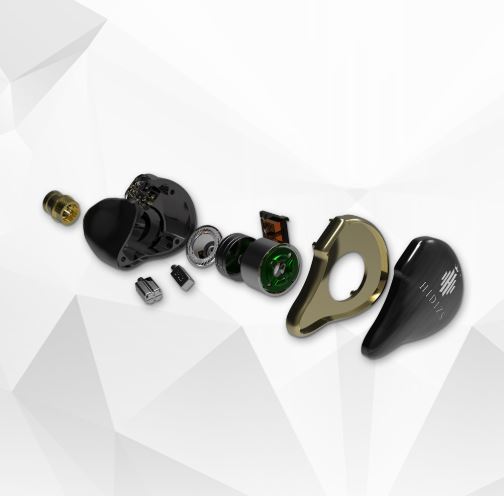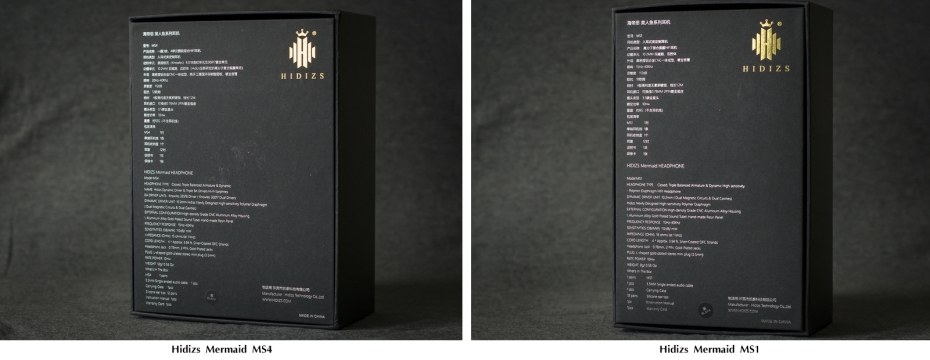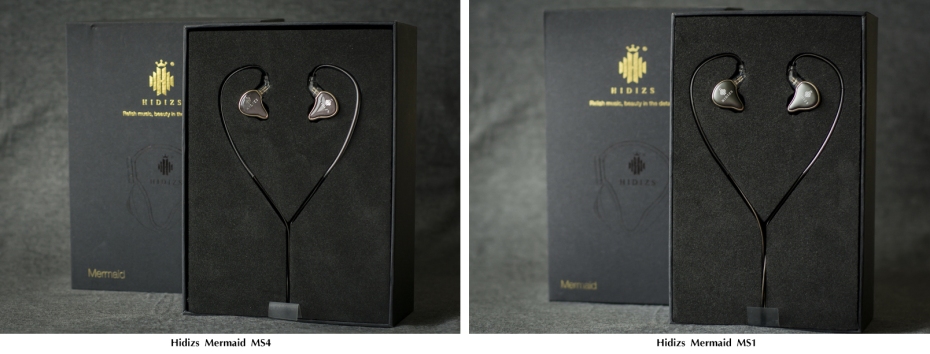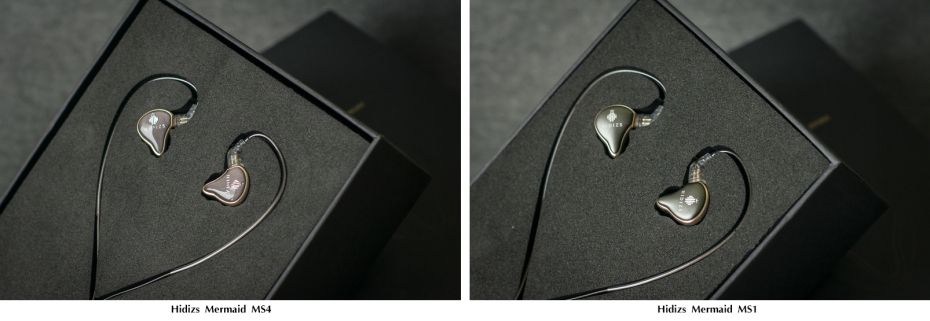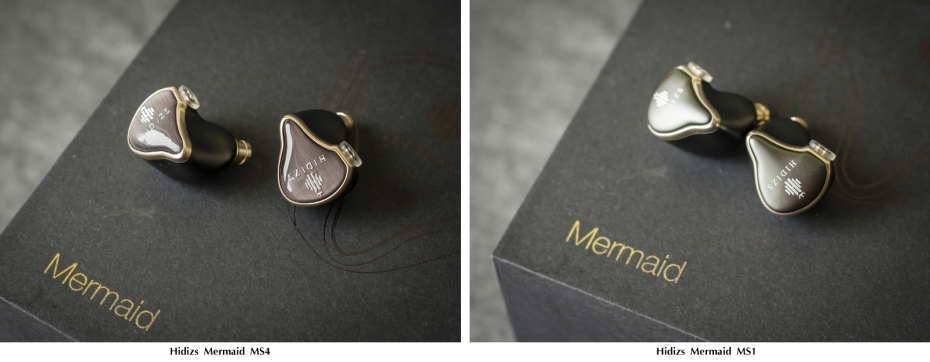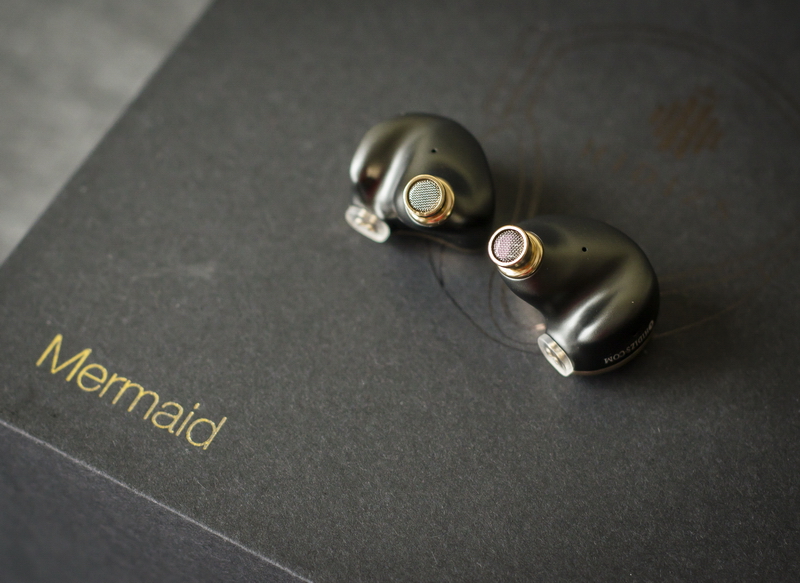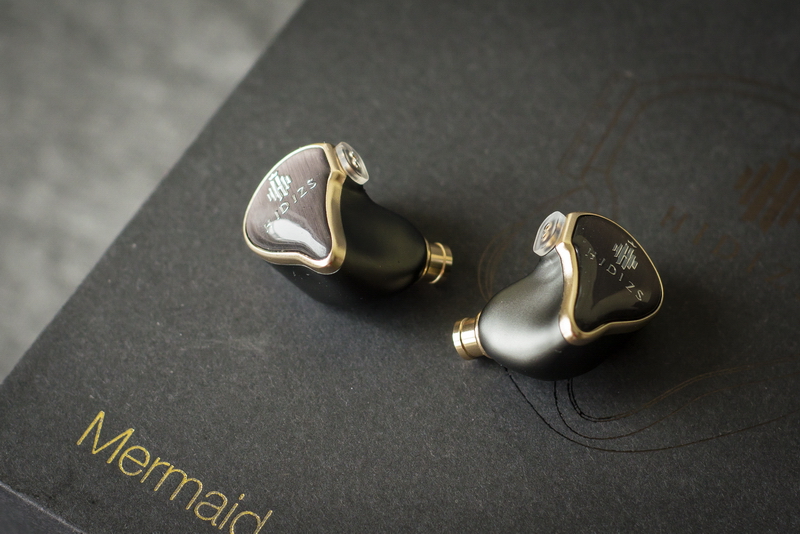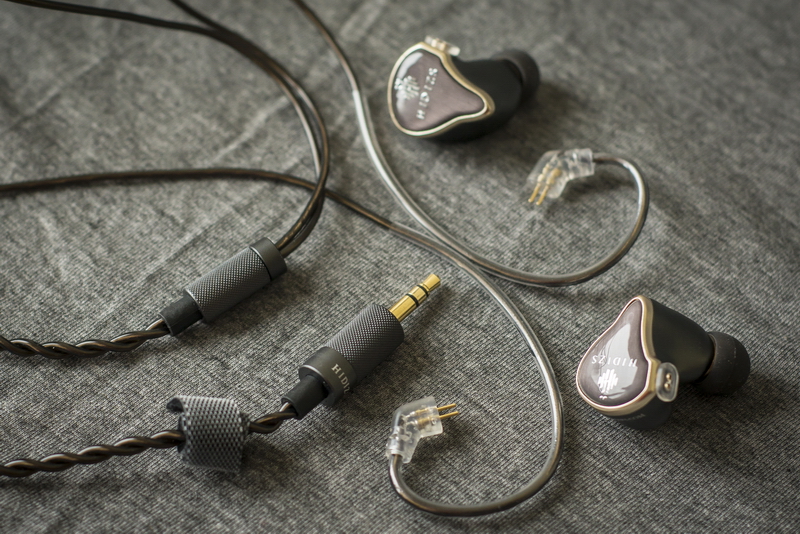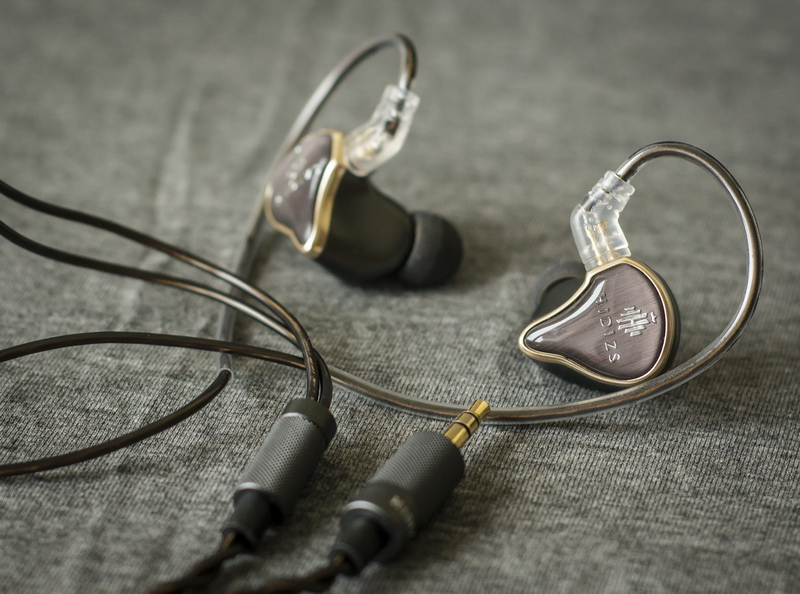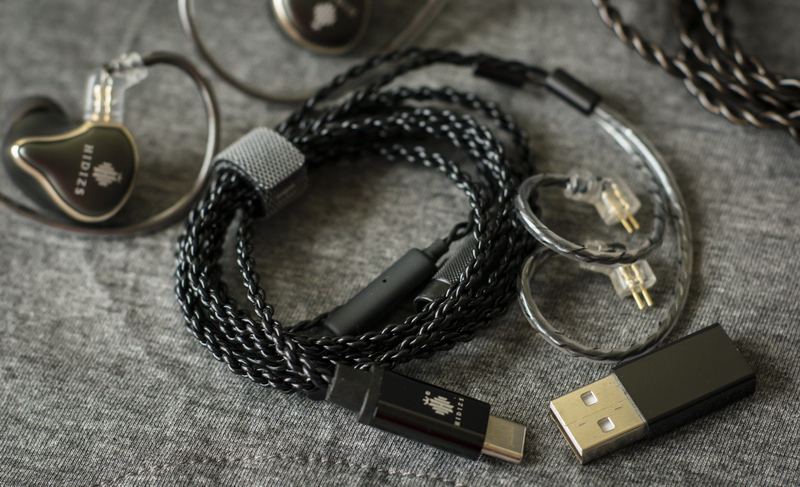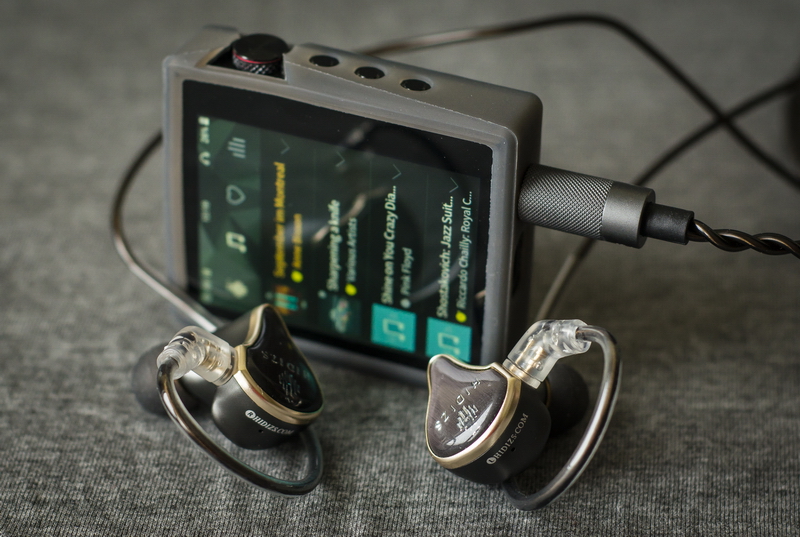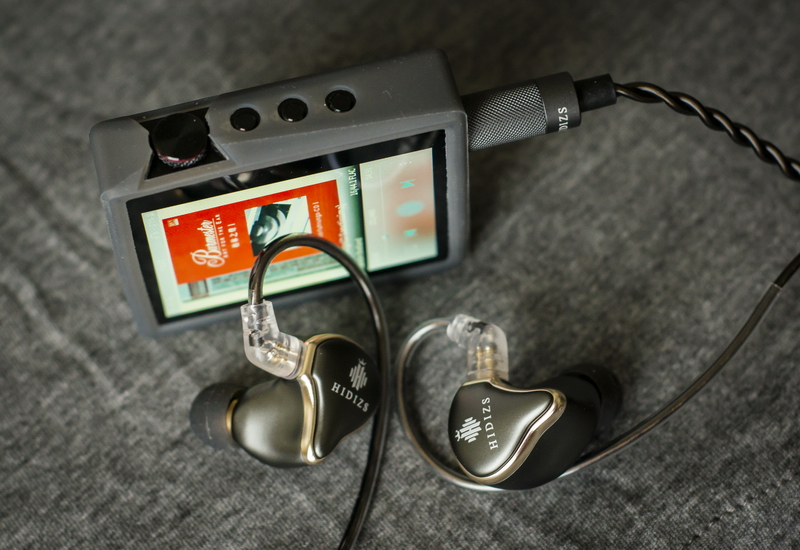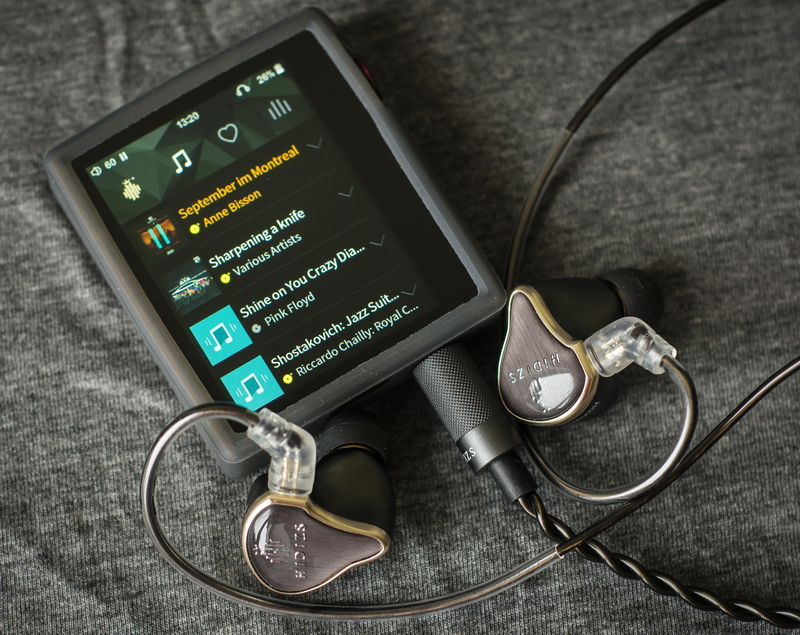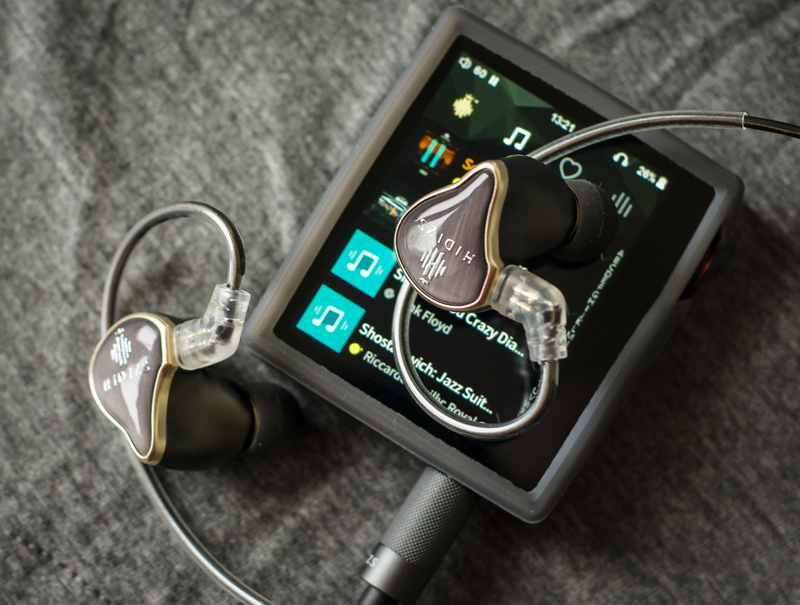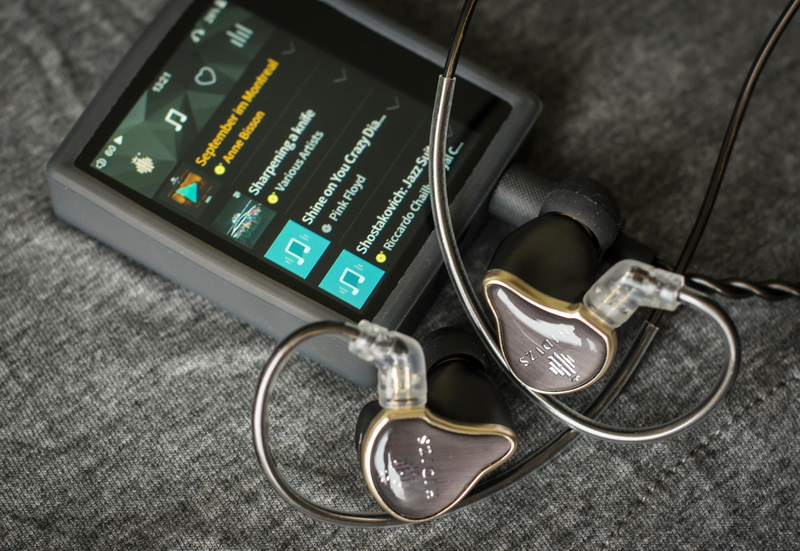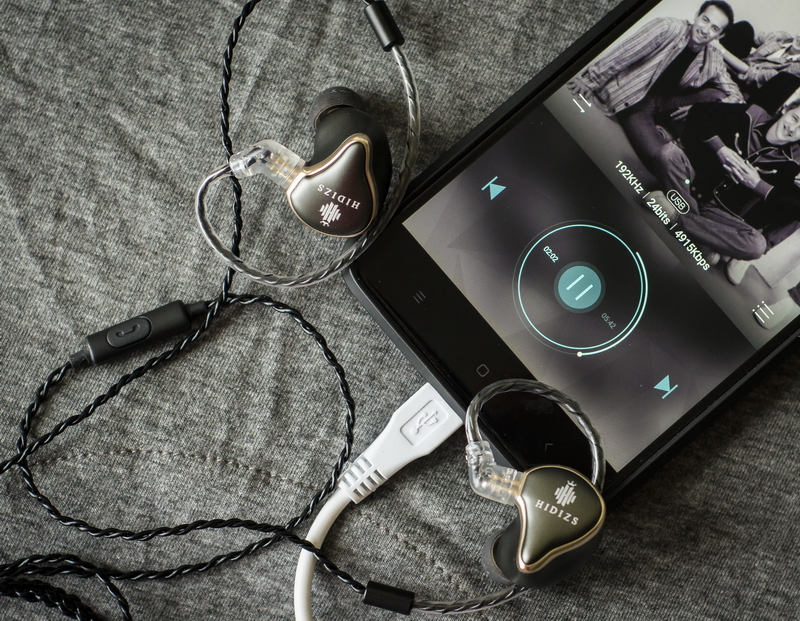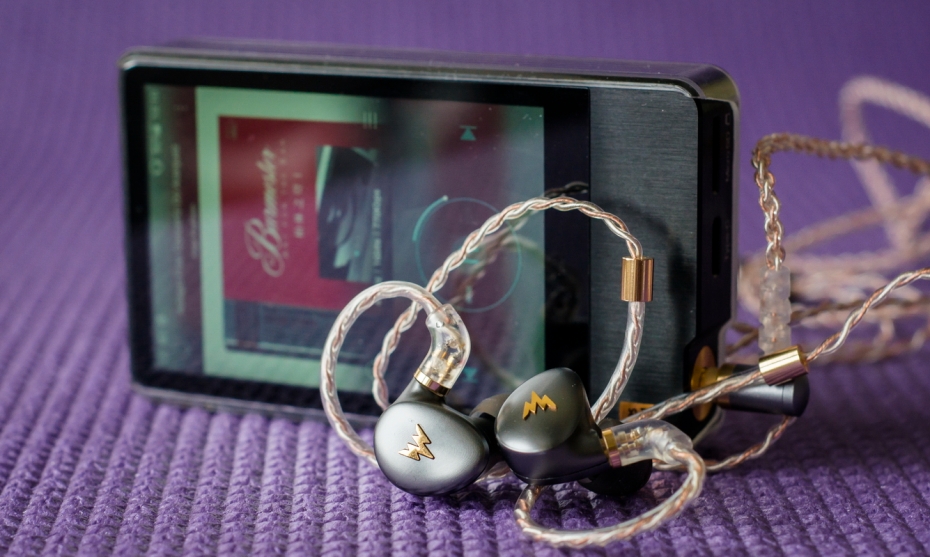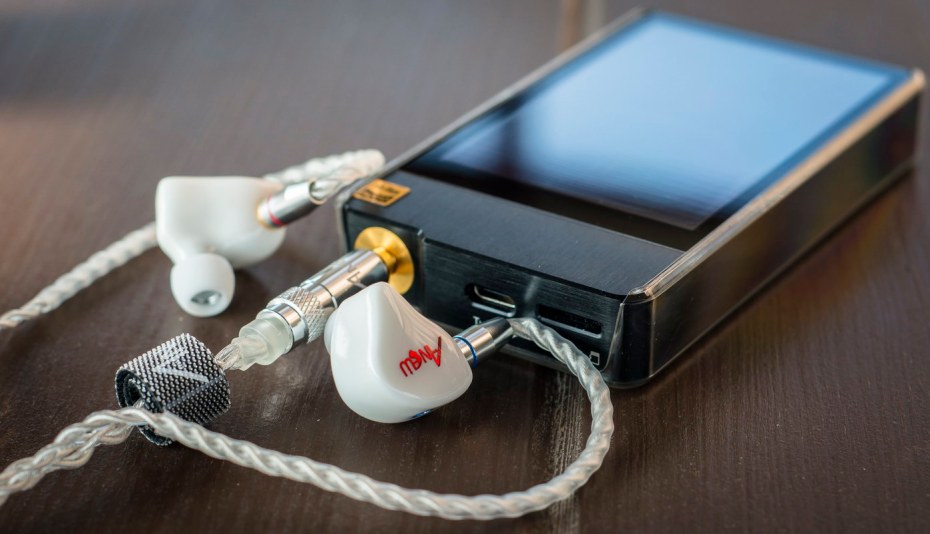Hidizs is currently preparing two new models of in-ear monitors under a common name and some features shared between the two. Main code name is «Mermaid» with the additional labels «MS4» and «MS1». Mermaid MS4 is more advanced hybrid model based on three BA drivers by Knowles and one dynamic driver while MS1 features the same single dynamic driver unit.
Along with good technical specifications Hidizs has found the way to make their IEMs a versatile choice for all future customers: from a casual user to the most advanced audiophiles. The main feature of Hidizs Mermaid family is the amount of different connectivity options to choose from, allowing almost any audio source and exempting from the additional adaptors.
Both models are
officially launched on Kickstarter, 7th Feb, 8:00AM EST.
We’ve already got a chance to examine pre-sales samples of both models and would like to share our opinion in this review.
Mermaid MS4 & MS1 technical specifications:
Mermaid IEMs structure:
Other features:
- Hidizs patented 10.4mm macromolecule diaphragm offers more consistent internal loss across all frequencies to deliver subtle highs and smoother bass
- Durable aluminum alloy cavity enhances the sound cohesion. The housing made of smooth resin with brushed metal.
Connectivity options:
- stock OFC, 4 strands cable with 2pin, 0.78mm IEM connectors and 3.5mm audio jack (always included)
OR/AND
- 2.5mm or 4.4mm balanced audio jack, OFC, 4 strands cable with 2pin, 0.78mm IEM connectors (optional accessory, available during KS campaign and afterwards) We are also checking with Hidizs on how to select 4.4mm instead 2.5mm during KS campaign.
- DH 10-RC microUSB Type-C Cable with integrated DAC, built-in microphone for voice calls and 2pin, 0.78mm IEM connectors (optional accessory)
- Bluetooth 5.0 cable with 2pin, 0.78mm IEM connectors (optional accessory)
As seen from the KS page, Hidizs decided to allow three ordering bundles for MS4 and MS1:
- BASIC KIT: 3.5mm unbalanced audio cable
- PRIME KIT: 3.5mm unbalanced audio cable + ANY other option (2.5mm or 4.4mm balanced / DAC cable / Bluetooth cable)
- ABSOLUTE KIT: 3.5mm unbalanced audio cable + ALL options (2.5mm or 4.4mm balanced + DAC cable + Bluetooth cable)
Prices for different sets are already listed on Hidizs MS4 & MS1 KS page.
Packaging, design and materials:
Both models come in pretty large black matt boxes with brand logo, shematic pictures and model names embossed at the top cover and technical description at the back.
We are not sure what is pushing the trend of developing huge packaging for tiny devices but it is certainly a pain for logistics in terms of shipping quantity and expenses. At the same time, no worries about the damage during the transportation and good feel of valuable possession

Inner box compartments are split into two layers. Top layer is formed by soft foam retaining IEMs and stock cable:
while the bottom layer contains several sets of exchangeable eartips and storage cases:
Box contents:
Mermaid MS4
- MS4 IEMs
- 3.5mm unbalanced cable
- 9 pairs of silicone eartips
- 3 pairs of memory foam eartips
- leather storage case
Mermaid MS1
- MS1 IEMs
- 3.5mm unbalanced cable
- 9 pairs of silicone eartips
- 3 pairs of memory foam eartips
- plastic storage case
So, the only difference in box contents between two models is the design of storage cases.
All other accessories such as stock audio cable and 4 sets of eartips are completely the same. Moreover, Hidizs has decided to identify different sets of eartips according to general influence it makes towards the sound: balanced, vocal and bass.
Not sure if it would produce the same results for everyone due to very personal perception and ear structure but it is a good indicator to give a clue what different eartips are designed for.
Back to IEMs: both models share the same design and shape of aluminum-alloy shells. The only difference is MS4 top cover pad which is made of transparent resin with brand logo printed underneath it, while the same element of MS1 is made of aluminum with brand logo imprints at top.
Shells are made of three parts: base with matt finish, polished golden cover and top aluminum or resin pad. The alignment of all three parts is perfect and the gap between the base and top cover is hardly visible.
Channel indicators are located at the back edge of the bases. No need to dig the net to understand the right way of cable connection.
BTW — corresponding channel indicators on the cable should be pointing inwards.
Two compensational openings for each channel: one is near the channel indicator and another one is close to the output nozzle on the inner part of the base.
Output nozzles are also made of aluminum and protected by grills. It is not unibody construction where the nozzles would protrude from the base but still feels very durable and monolithic.
2pin, 0.78mm connector bases are made of transparent plastic, don’t show any free play and feel quite tough when inserting cable pins. Seems that this furniture is quite expensive.
Stock cables with 3.5mm unbalanced plugs are made of oxigen-free copper (4 strands), feature flexible transparent earguides, transparent plastic 2pin connector, aluminum Y-splitter, limiter and audio jack housing. All aluminum elements have similar rough pattern for a better grip.
In overall, both models look beautiful and very attractive. The design is even better in real life. All elements are perfectly crafted, all imprints are neat and clean. MS4 top cover pad and golden brand logo underneath it adds some additional value but we think that both models deserve the highest score for their stunning externals.
Fit comfort:
Despite having quite large dimensions and thick profile, Mermaid IEMs feel very comfortable. We would place those among several other most comfortable models like Kinera Idun or Shozy & NEO CP to wear for long, non-disturbing listening sessions. This is not only about the natural shape but also about convenient stock cable earguides that relieve the physical tension from your ears.
Optional accessories:
- Optional cables with 2.5mm or 4.4mm balanced jacks are identical to stock 3.5mm audio cable and feature the same elements described above.
2. Audio cable with integrated DAC (DH 10-RC): probably the most interesting and intriguing optional accessory which provides better driving potential and overall sound quality to those who would like to use IEMs with their smartphones, PCs or tablets.
Hidizs has been successfully selling Sonata HD DAC Cable (USB DAC -> 3.5mm adapter) for a long time with good feedback from the majority of the customers. As far as we understand, DAC cable for Mermaid IEMs is a combination of Sonata HD DAC cable with regular 2pin, 0.78mm audio cable.
DH 10-RC DAC cable specifications:
- Connector: microUSB Type-C (+ USB A adaptor)
- DAC chip: CS42L42
- Sample rate: 24bit/192kHz
- Output power: 75mW + 75mW @32Ω
- SNR: 117dB
- Dynamic range: 115dB
- THD: <0.0006%
- Built-in microphone for voice calls
- Built-in one button remote for answering calls
- Connecction to IEMs: 2pin, 0.78mm
- cable 1.2m, TPE, OFC, 4 core
This upgrade cable comes in a separate box together with soft storage bag and USB A adapter.
3. Bluetooth 5.0 cable. Unfortunately, it was not provided for the review and we can only guess on its quality, supported audio protocols and so on… We would update as soon as all of our questions about Bluetooth cable would be answered. No clue whether it would support UAT — the latest HiBY 24/192, 1.2Mbits/s protocol.
Sound quality:
Tested with AP80DAP, Redmi Note4X + DAC cable
Lows and midbass:
MS4:
MS4 bass extension and texturing are quite impressive. It doesn’t sound boomy or lifeless, neither MS4 can be called bass-heavy IEMs. At the same time, lower range is obviously present here, sounds quite enveloping and doesn’t lack the presence either. It mostly attracts the attention with smooth, rich and evident textures, instead of the amount or pressure. Very good scope and separation in the entire sound picture. We like such accurate and balanced approach. Moreover, the speed and decay is fast enough to follow other ranges without the feel of being detached as has been spotted in some hybrid models.
Midbass is very good in terms of power and dynamics. It has the necessary speed and air for the drums to sound rich and natural while kept on the appropriate level of gain not to disturb from smooth exeprience. Good example is vynil rip of «Brothers in Arms» by Dire Straights which would suffer from elevated midbass section resulting in very vivid drum tempo beat with lots of bright sounding IEMs. Not a problem for MS4 though — this leading beat is not so emhasized and mostly leveled off.
MS1:
While resolving good amounts of textures, MS1 deep bass extension is moderate. Deep bass lacks some presence and the entire picture exhibits more emphasis on midbass. Couple of inputs to EQ did a good job but if to evaluate this section with no additional editing from the source side — we would say that MS1 IEMs would be a better option for those who would not expect very deep bass reach. The peculiar thing here is that when we have tried USB DAC cable instead of AP80 DAP the situation has changed dramatically. The lack of lows has vanished completely and this portion gained a lot in the entire sound picture. Therefore, having good texturing and good speed plus the dark source with the additional emphasis on lows would bring MS1 lower end much closer to MS4 or other good and more expensive rivals. From this we can conclude that our first judgement about the lower end is not very fair - the result greatly depends of the source and lows are decent in case of good match.
Midbass section sounds good, dynamics, articulation and power are appropriate for ntural and engaging drums. There is a certain accent on midbass in the sound when paired with AP80 DAP but it fades away when DAC cable is used.
Mids and vocals:
MS4:
A combination of multiple BA by Knowles + dynamic driver and good further tuning results in high resolution while still keeping gentle presentation of mids. Vocals don’t feel recessed or standing out too much, sound pretty thick and reasonably exposed in the entire picture. Male and female voices are fairly balanced in gain with only a slight elevation on female vocals. We like that mids don’t fall into excessive brightness which is kind of signature of Knowles BA drivers that would not trade delicate delivery for the icy crispness. There is also a pleasing touch of warmth that would smooth out harsh peaks and create extra textures for voices, strings or horns. Instruments and vocals have enough space, sound pretty clean and don’t tend to mix. Separation is decent. Good articulation is spotted in this section on acoustic guitars, sustained by armature micro dynamic capabilities. Everything together in mids reminds us of the most balanced rivals based on BA units form the same vendor.

MS1:
MS1 mids is a good example of getting very good performance from a single dynamic driver. Resolution of mids is quite high while entire presentation feels very linear. MS1 extends this good characteristic of MS4 and equializes male to female vocals even further. No biting peaks on female vocals in the most suffering tracks, voices are better exposed and brought closer to the stage front. Sound of instruments and vocals is similarly rich and thick. Instruments have a good level of separation, don’t tend to mix and creat good imaginary stage. MS1 mids are warm, quite smooth and exposed.
Treble:
MS4:
MS4 treble feels elevated but to a reasonable extent. It is not overly crisp or icy cold and doesn’t influence the entire sound picture too much or making sound too thin. Most of the accent falls on the lower treble with adequate feel of air and transparency. Extension is quite good, resolution and micro dynamics are great. As already mentioned — very good that treble range is gentle and accurate instead of being too sharp and crisp. In overall, the presence of treble is surely enough to compensate other ranges and to add slight accent for more juicy experience.
MS1:
MS1 treble resolution and extension are quite impressive for dynamic driver model. It feels clear and transparent and at the same time do not produce extra sibilances or noise. Of course, hard to directly compete with BA drivers but at least the treble is in good balance with the mids and doesn’t suffer from lack of details or dynamics. We would say that MS1 treble is one of its main virtues, especially when used with USB DAC cable. Yes, again, we have noticed that USB DAC cable exposes both ends of MS1 better, which seems to produce more appealing results in overall.
Sound stage:
MS4 & MS1:
Sound stage produced by both models is moderate and quite similar to each other with only a slight advantage on MS4 side as it creates more room on lows and defines vertical domain with better treble extension. MS1 stage feels a bit deeper due to better exposure of vocals and mids. There were only few and more expensive IEMs on our tests that we would definitely point out as having obviously larger stage. Therefore, MS4 and MS1 are neither clear winners nor the outsiders in this respect.
Sound summary:
MS4:
MS4 sound can be described as V-shaped with the adequate emphasis on lows and treble, very good extension and texturing of lows, excellent midbass, slightly warm mids and good reproduction of treble. Entire sound picture is accurate and gentle, pretty transparent, without severe peaks or excessive crispness.
MS1:
MS1 sound can be described as fairly balanced, with slightly exposed and pretty balanced mids, moderate bass extension, good midbass and impressive treble for dynamic IEMs. Entire sound picture is warm, focused on vocals and instruments in mids.
USB DAC cable performance:
As already mentioned — USB DAC cable emphasizes lows and treble ranges, has enough driving ability for both models (doubles the output power of a regular smartphone) and handles midbass and overall dynamics much better. It does also outperform smartphones or PC audio outputs in terms of resolution and amount of details. More information can be found in our
review of Sonata HD cable.
MS4 compared to LZ HIFI A6Mini:
LZ A6Mini is a hybrid model based on 1DD + 1 piezo-electric driver. In comparison to MS4 is does have better treble extension and emphasizes treble much more. But it also features additional tuning output nozzles that would cut off excessive brightness and produce quite balanced results. On its turn, MS4 is a better performer in terms of lower end (extension and texturing), vocals (less difference in female to male vocal gains) and has thicker, warmer and more solid sound in overall.
MS4 compared to Whizzer Kylin:
Whizzer Kylin is quite popular hybrid model that suffers from bass portion (to our liking). Its bass is huge but feels very slow and detached from the rest of the frequency ranges. Treble is also elevated to a greater extent. MS4 feel much more balanced, accurate and gentle throughout the entire frequency range. Moreover, lows are much more adequate and do keep up nicely while treble is not that bright and accented.
MS1 compared to Tanchjim Darkside:
Tanchjim Darkside are beautifully crafted single dynamic driver IEMs with dark and warm sound. Lower end extension and texturing are great but mids and treble are influenced a lot by that to get a specific signature as the result. MS1 sound more delicate and balanced, only moderately warm and dark, with much better treble presence and exposed mids.
MS1 compared to Anew U1:
Perhaps, the hardest comparison here. We love Anew U1 single dynamic driver IEMs for fairly balanced performance, great lows and clean treble. There are some flaws like driver flex (no compensational opening), not the perfect (but good) fit and tendency to have that harsh peak on female vocals for the most treble sensitive people. MS1 do have a better fit, don’t show the problem with driver flex and have better equalization of male to female vocals (less tendency to harsh peaks). At the same time, extension of lows is not that great as in Anew U1. Therefore, we would recommend MS1 over Anew U1 for upper mids — lower treble sensitive people.
Conclusion:
After spending several days examining, listening and reviewing Mermaid MS4 and MS1 IEMs, we think that Hidizs has done a great job on everything: creating good hybrid and dynamic IEMs in terms of crafting and sound quality, developing the new and more universal approach that would satisfy the needs of the vast majority of audio fans and finally — setting the adequate price tag that perfectly describes the capabilities of both models. Our own findings show that more advanced Mermaid MS4 model is worthy of the highest scores and reasonably placed between $180 — 270 hybrid rivals that we have tested already, while Mermaid MS1 based on single dynamic driver is on par with more expensive rivals and capable of even more impressive results when paired with the most suitable audio source. Moreover, different connectivity options, cable with intergrated DAC as the most convenient and innovative solution create the additional value to the entire set.

Our last advice would be to seriously consider getting one of those models during Kisckstarter campaign due to significant discount figures that seems to be quite a bargain. In case of getting MS1 IEMs — consider ordering it in bundle with DH 10-RC DAC cable as it seems to be a good pair.
Link to
Hidizs Mermaid MS4 & MS1 Kickstarter campaign.






 HS4_2.JPG47.5 KB · Views: 0
HS4_2.JPG47.5 KB · Views: 0 HS4_3.JPG32.8 KB · Views: 0
HS4_3.JPG32.8 KB · Views: 0 HS4_7.JPG61.5 KB · Views: 0
HS4_7.JPG61.5 KB · Views: 0 HS4_10.JPG27.3 KB · Views: 0
HS4_10.JPG27.3 KB · Views: 0 HS4_9.JPG16.3 KB · Views: 0
HS4_9.JPG16.3 KB · Views: 0 HS4_8.JPG29.5 KB · Views: 0
HS4_8.JPG29.5 KB · Views: 0 HS4_15.JPG27.6 KB · Views: 0
HS4_15.JPG27.6 KB · Views: 0 _DSC9718.jpg982.9 KB · Views: 0
_DSC9718.jpg982.9 KB · Views: 0 _DSC9721.jpg847 KB · Views: 0
_DSC9721.jpg847 KB · Views: 0 _DSC9726.jpg735.9 KB · Views: 0
_DSC9726.jpg735.9 KB · Views: 0 HS4_11.JPG35.8 KB · Views: 0
HS4_11.JPG35.8 KB · Views: 0 HS4_4.JPG23.3 KB · Views: 0
HS4_4.JPG23.3 KB · Views: 0 HS4_5.JPG23.9 KB · Views: 0
HS4_5.JPG23.9 KB · Views: 0 HS4_6.JPG23.6 KB · Views: 0
HS4_6.JPG23.6 KB · Views: 0




































